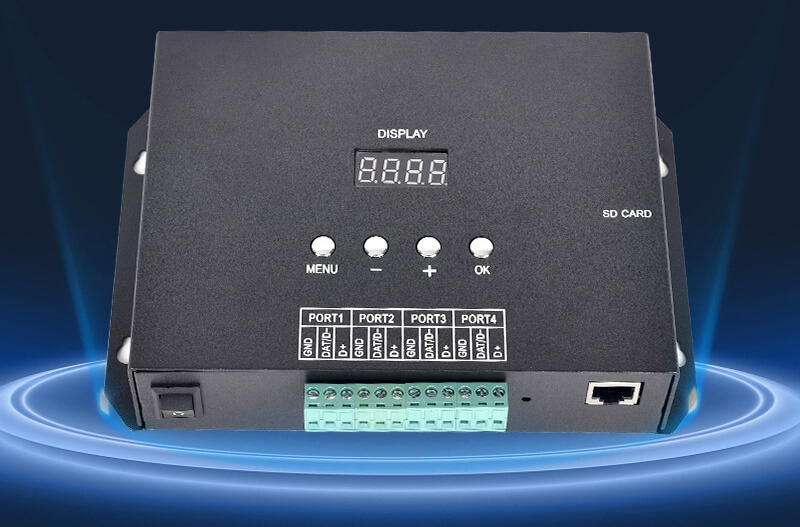What is DMX512 Protocol?
DMX512, which stands for Digital Multiplex 512, is a widely used digital communication protocol in the realm of stage lighting, sound systems, and special effects devices. It provides a means for users to remotely control and adjust various parameters of lighting and sound equipment, enabling the creation of vibrant and dynamic stage effects. Initially introduced in 1986, DMX512 has since become a standard in the world of stage performances and entertainment.

Advantages of the DMX512 Protocol:
1. Flexibility and Precision:
- The DMX512 protocol allows for extremely precise control of a wide range of lighting and sound effects. Each channel can be finely tuned, making it effortless to create diverse and intricate stage effects.
2. Expandability:
- DMX512 protocol boasts exceptional expandability. Users can easily add more devices, provided they support the DMX512 protocol. This makes upgrading and expanding existing systems a straightforward process.
3. Universality:
- DMX512 is a universal protocol, applicable not only to lighting but also to controlling sound, stage effects, and mechanical devices. This means users can use the same hardware and software to manage various types of equipment.
4. Interoperability:
- As DMX512 is an industry standard, most lighting and sound equipment supports the protocol. This ensures seamless cooperation between devices, guaranteeing compatibility across different manufacturers.
5. Fault Tolerance:
- The DMX512 protocol possesses a degree of fault tolerance, allowing control of devices even in the presence of some level of interference during transmission. This helps reduce the risk of technical issues during performances.

Disadvantages of the DMX512 Protocol:
1. Wired Connectivity:
- DMX512 relies on wired connections, necessitating the installation of a significant amount of cabling, particularly in complex stage setups. This can result in intricate wiring and maintenance challenges.
2. Communication Distance Limitations:
- The DMX512 protocol has limitations on communication distance, typically not exceeding 100 meters. For large stages or buildings, signal boosters or segmented wiring may be required, increasing costs and complexity.
3. Signal Interference:
- In electromagnetic interference environments, DMX512 signals can be susceptible to interference, leading to communication issues. Additional measures are necessary to ensure signal stability.
4. Address Assignment:
- In large-scale stage setups, careful management of the DMX addresses for each device is required to avoid conflicts. This demands time and planning.
In summary, the DMX512 protocol is a powerful digital communication protocol widely used for controlling various stage and entertainment devices. It provides precise control and excellent universality, but it also comes with some limitations, particularly related to wired connections and signal interference. Nonetheless, DMX512 remains an indispensable tool in the world of stage performances, providing crucial support for creating awe-inspiring audiovisual effects.
If you need assistance from professionals, feel free to contact us. We are here to provide you with expert help and support for all your needs. Don't hesitate to reach out to our team for personalized assistance and solutions. We look forward to serving you.


